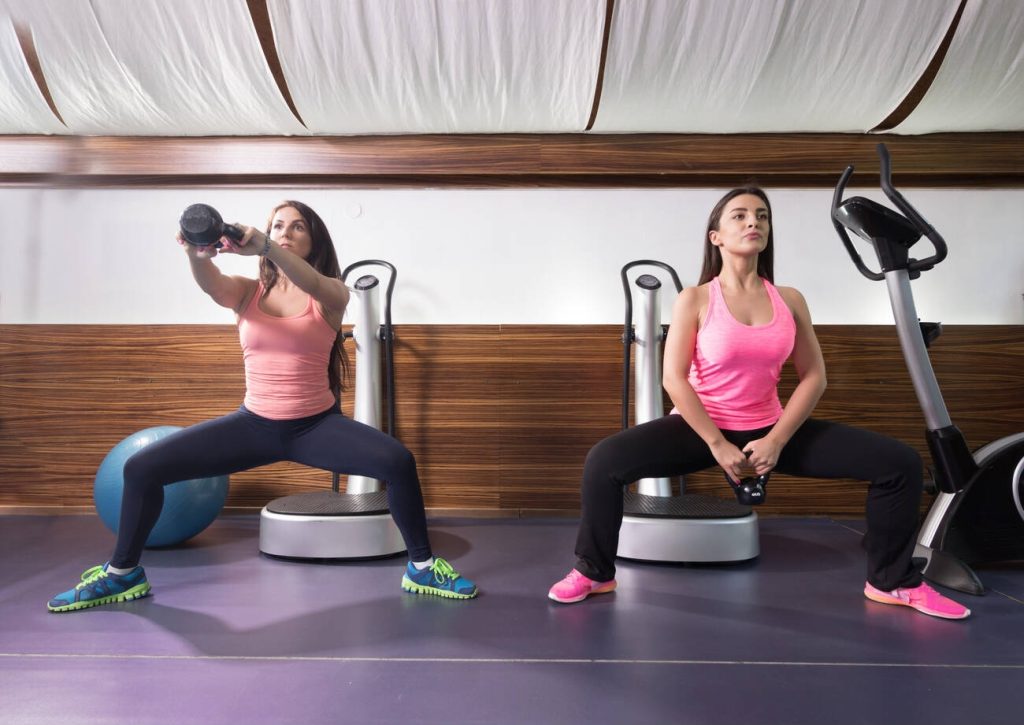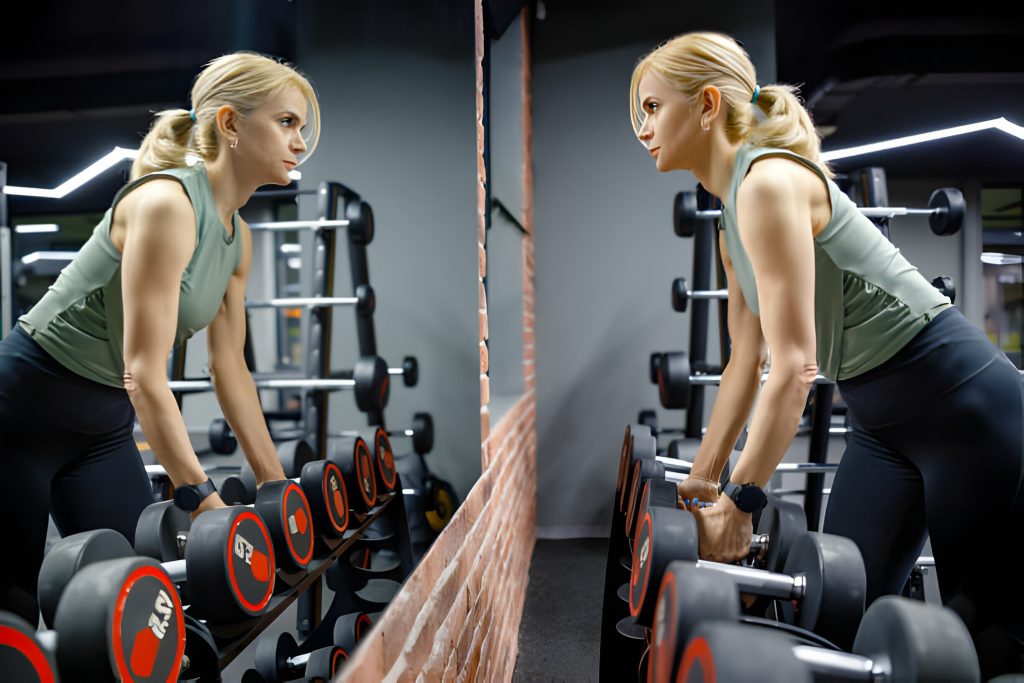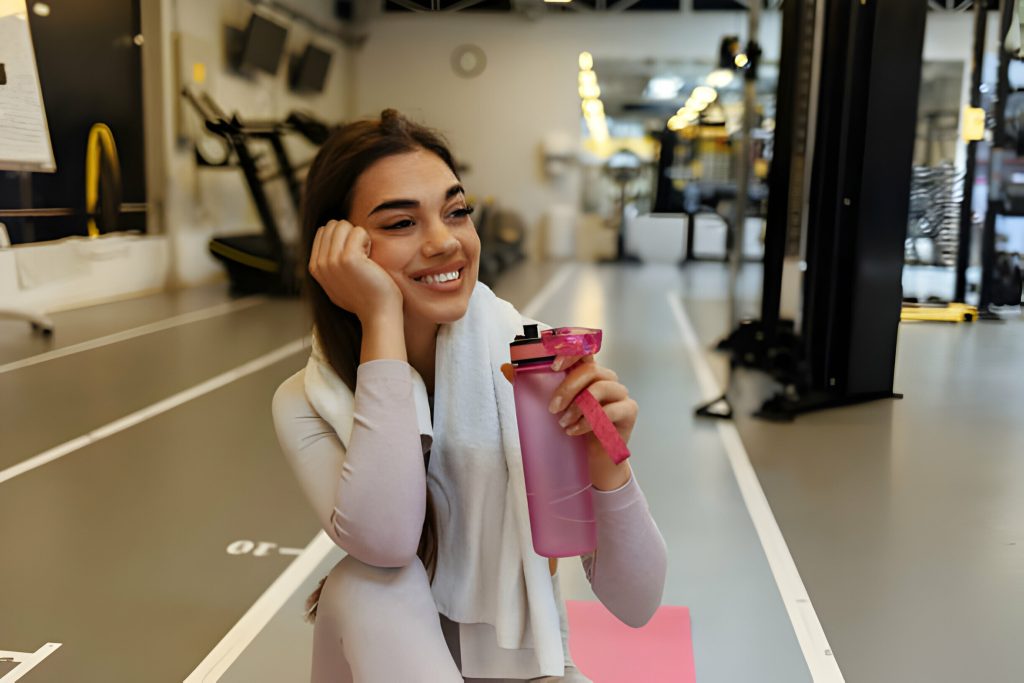Looking to sculpt a booty that turns heads? Well, my friend, it’s time to put those glutes to work! You’ve heard the rumors: doing 100 squats a day can transform your rear end into a gravity-defying masterpiece. But is it really possible? In this article, we’ll dive deep into the science behind squats and their impact on bum growth. So grab your leggings and get ready to sweat because we’re about to uncover the truth about those squat gains.
The Science Behind Squats and Glute Growth
The science behind squats and glute growth is important to understand when determining if doing 100 squats a day will make your bum bigger. When you perform squats, you engage your hip flexors, which are crucial for proper form and movement. To add more challenge to your squat routine, you can incorporate resistance bands or try advanced squat moves like plyometrics. It’s also important to pay attention to your chest alignment during squats by keeping your chest lifted and avoiding bending the spine. Additionally, diet and genetics play a role in determining the size of your bum. While doing 100 squats a day can help strengthen and tone your glutes, it’s essential to have realistic expectations and consider other factors that contribute to muscle growth and development.
How Squats Impact Muscle Building in the Butt
Engaging your glutes during squats can really make a difference in building muscle in your butt. To maximize glute activation, try incorporating squat variations that specifically target the glutes. This includes exercises like sumo squats, Bulgarian split squats, and pistol squats. Adding resistance, such as using dumbbells or resistance bands, is also key to building strong glute muscles. The role of progressive overload cannot be overlooked either. Gradually increasing the weight or intensity of your squats over time will help stimulate muscle growth and development in your butt. Additionally, squat depth plays a significant role in glute development. Aim to go below parallel or at least reach a 90-degree angle with your thighs to fully engage the glutes. Lastly, consider incorporating plyometric exercises like squat jumps or box jumps for explosive glute growth.
The Role of Frequency and Repetitions in Bum Growth
To maximize your results in building a stronger and more toned bum, it’s important to find the right frequency and repetitions for your squat routine. Recovery is crucial for muscle growth, so make sure to give your glutes enough time to rest between workouts. Aim for 2 to 3 times a week with 36 to 48 hours of rest for the muscle group. In addition, incorporating progressive overload can help you see continuous progress by gradually increasing the weight or resistance used during squats. To activate your glutes even more, include glute activation exercises before squatting. Compound exercises like squats also have added benefits as they work multiple muscle groups simultaneously, leading to overall strength and development. Lastly, don’t forget about nutrition! Fueling your body properly with a balanced diet that includes enough protein is essential for muscle growth and recovery.
Form and Technique: Maximizing Results From Squats
Maintaining proper form and technique during your squat workouts is crucial for maximizing the results you achieve. Common mistakes to avoid include rounding your back, letting your knees cave inwards, and not going low enough. To prevent injuries, it’s important to warm up properly before starting your squats. Incorporate dynamic stretches and movements like leg swings and hip circles to activate the muscles you’ll be using. Proper breathing is also key during squats. Inhale as you lower down into the squat and exhale as you push back up. Remember to choose squat variations that suit your fitness level and goals. Whether it’s a basic squat, goblet squat, or pistol squat, focus on maintaining good form throughout each repetition. By paying attention to these details, you can prevent injuries and get the most out of your squat workouts.
Advanced Squat Moves for Bigger Glutes
Advanced squat moves, such as plyometrics and resistance band exercises, can help target and strengthen the glute muscles for a firmer booty. Incorporating resistance band exercises into your squat routine can provide an added challenge and engage the smaller glute muscles. To further intensify your workout, try advanced squat variations like squat jumps or box jumps. Don’t forget to focus on strengthening your hip flexors with exercises like frogger stretches and lunges. When performing squats, it’s important to maintain proper chest and spine alignment by keeping your chest lifted and avoiding bending of the spine. Aim for depth in your squats by going as low as you can while maintaining good form, ideally reaching 90 degrees or slightly lower. Remember to always prioritize correct depth, range of motion, and form during advanced squat moves for optimal results.
Other Factors Affecting Bum Size: Diet and Genetics
Diet and genetics play a significant role in determining the size of your bum. While squats are known to be effective for building glute muscles, there are other factors that can impact your bum size. Your diet has a direct influence on muscle growth and overall body composition. Consuming enough protein and nutrients is crucial for maximizing squat results. Additionally, genetics also play a role in how your glutes respond to exercise. Some individuals may naturally have a predisposition for larger or smaller bums based on their genetic makeup. Understanding the science behind glute growth can help you tailor your fitness routine and dietary choices to achieve your desired results. By combining proper nutrition, targeted exercises like squats, and considering your genetic influence, you can work towards maximizing the size of your bum effectively.
| Factor | Description |
|---|---|
| Diet Impact | Proper nutrition is essential for muscle growth and overall body composition |
| Genetic Influence | Genetics play a role in how your glutes respond to exercise |
| Glute Growth Science | Understanding the science behind glute growth helps tailor fitness routine |
| Maximizing Squat Results | Combining proper nutrition, targeted exercises, and genetic consideration |
Remember that everyone’s body is different, so it’s important to consult with a fitness professional or registered dietitian to create an individualized plan that suits your specific goals and needs.
Safety and Common Concerns: Debunking Myths About Squats
Now that you know about the factors affecting bum size, let’s address some common concerns and debunk myths about squats. One myth is that squats are bad for your knees, but in reality, when performed with proper form, they can actually help build supportive muscles around the knee joint. To ensure knee safety, it’s important to engage your core and focus on proper form. Another concern is glute activation during squats. By sitting back into your heels and pointing your knees out towards your pinky toes, you can effectively activate your glutes while performing the exercise. Remember to maintain chest and spine alignment throughout the movement and aim for a depth where thighs are parallel to the floor. By following these guidelines, you can safely perform squats and reap their benefits for building a firmer booty.
The Benefits of Squats Beyond Bum Growth
When performed correctly, squats can improve overall strength and mobility in addition to shaping the glutes. To maximize the benefits of your squat workouts, consider incorporating resistance bands for added resistance and muscle engagement. Resistance bands can target different muscle groups and provide a challenging workout. Remember to prioritize rest days for muscle recovery, as this is crucial for muscle growth and development. Additionally, nutrition plays a significant role in muscle growth, so make sure you are fueling your body with the right nutrients to support your fitness goals. Keep in mind that genetics also play a role in muscle development, so be patient with your progress and focus on what you can control. Set specific goals for glute growth and track your progress over time to stay motivated and see the results you desire.
Creating a Comprehensive Lower Body Training Plan
To create a comprehensive lower body training plan, you should include a variety of squat variations, such as goblet squats, wall squats, and pistol squats, to target different muscle groups and maximize results. Here’s what you need to know:
- Incorporate resistance training: Squats are great for building muscle, but adding weights or resistance bands can take it up a notch.
- Avoid common squat mistakes: Make sure you maintain proper form by keeping your chest lifted, engaging your core, and not bending the spine.
- Incorporate cardio exercises: Adding cardio exercises like jumping jacks or squat jumps can increase heart rate and burn more calories.
- Don’t forget rest days: Rest is essential for muscle growth and recovery. Give yourself at least one or two rest days per week to avoid overtraining.
Remember that genetics also play a role in muscle growth, so be patient with your progress and stay consistent with your training routine.



